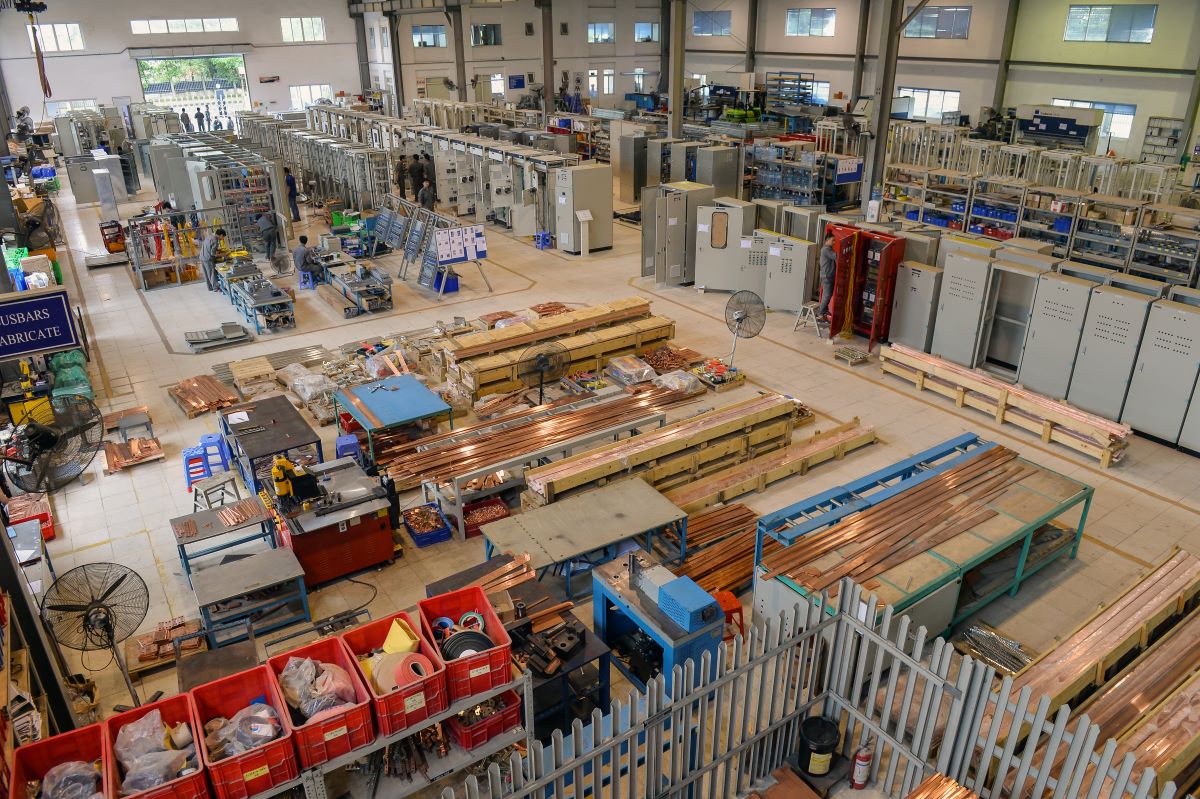The Vietnam manufacturing sector is the core of the nation’s economy and its primary growth driver. In 2022, the sector contributed 24.8% to Vietnam’s GDP. Notably, the country has set a goal for the manufacturing sector to contribute 30% to its GDP by 2030, out of which 45% would come from high-tech products. Vietnam plans to achieve this by growing the manufacturing industry’s contribution by 8.5% a year.
Vietnam’s manufacturing sector has been the direct beneficiary of the China Plus One policy after the trade relation between the US and China soured. The US and Vietnam signed a new strategic partnership focussed on building a robust semiconductor supply chain for the US industry. A report indicates that US goods imports from Vietnam climbed 25.1% year over year in 2022.
Also, Vietnam’s competitive labour cost has favoured the growth of its industries. With an average factory worker payment of about $2.99 per hour, as against China’s $6.5/hour, it is one of the cheapest among other Southeast Asian nations.
Another major factor that boosted the Vietnam manufacturing industry are several free trade agreements (FTA). Being a member of the World Trade Organisation (WTO) and the Association of Southeast Asian Nations (ASEAN), Vietnam signed 15 FTAs with several countries across continents. Consequently, domestic, and foreign-based enterprises operating in Vietnam continue to benefit from preferential tariffs and reduced operational costs.
Government incentives played a critical role
Under Decree 57 issued in 2021, the Vietnam government vowed to provide financial support to enterprises impacted by the pandemic. These enterprises include the supply of raw materials, spare parts, and components to the manufacturing industry comprising mechanical engineering, leather, footwear, and automotive among others.
Furthermore, Vietnam has introduced several tax incentives and tax holidays for manufacturing projects under the corporate income tax (CIT). Many of these incentives are for high-tech industries like IT, automobiles, textiles, and garments.
These incentives have helped Vietnam to attract a good volume of Foreign Direct Investment (FDI). The investment surged 54% year on year in October 2023, reaching $15.3 bn. Out of this, the investment in processing and manufacturing contributed 73.1% of the funds.
Companies across sectors flock to Vietnam
Vietnam primarily attracts semiconductor and advanced electronics tech companies to install their manufacturing base in the country. In October, Amkor, chip packaging producer announced its first, $1.6 bn factory in Vietnam. As per JPMorgan, the country is set to manufacture 65% of Apple’s AirPods earphones, 5% of MacBook laptops, and 20% of iPad tablets as well as Apple Watch smartwatches by 2025.
Apart from tech manufacturing, Vietnam is also home to automobile component manufacturers. South Korea’s Hanwha has set up a motorbike parts manufacturing in Hanoi, while Japanese vehicle maker Yokowo established its plant in Northern Ha Nam.
Moreover, Nike relies on Vietnam for manufacturing its footwear, clothing, and equipment. The sporting brand currently has 155 factories in Vietnam located towards the south of the country mainly in and close to Ho Chi Minh City.
Besides, Vietnam is also attracting massive investments in EV production facilities. The country’s solar capacity multiplied 200 times from 85 MW in 2017 to nearly 17,000 MW in 2021.
Lack of skilled labour and infrastructure limits production abilities
Despite being a critical high-growth sector, the manufacturing sector in Vietnam grapples with certain challenges, one of which is the lack of skilled labour. In 2022, the country’s Ministry of Labour revealed that only 11% of the domestic workforce is highly skilled. Most foreign investment is leaned toward the high-tech industry, but Vietnam has a relatively low-skill workforce. As a result, Vietnam is only involved in low-value and simplistic activities, restricting its progress in the value chain.
Vietnam also lacks the level of infrastructure that is required for advanced manufacturing facilities. The nation has underdeveloped rail and road infrastructure which causes a problem in transporting raw materials and components between the factories.
To tackle both challenges, the government is taking several measures. In 2022, the previous Deputy Prime Minister, Vu Duc Dam, approved a strategy to boost technical and vocational education (TVET) to be at par with the top ASEAN countries by 2030. Also, the Vietnamese government approved an expenditure plan of $43-65 bn for developing road, rail, air, and water transport infrastructure between 2021-2030.
An analysis by McKinsey suggests that transitioning from a cost-effective to a productive manufacturing destination is the need of the hour for Vietnam if it wants to surmount existing challenges.
“This would require an orchestrated collaboration between the public and private sectors. While Vietnam’s government has continually enabled such efforts, they need to be effectively cascaded down to the provincial and industrial-park level with simplified processes,” explains McKinsey.


 Australia
Australia China
China India
India Indonesia
Indonesia Japan
Japan Malaysia
Malaysia Philippines
Philippines Singapore
Singapore South Korea
South Korea Taiwan
Taiwan Thailand
Thailand Vietnam
Vietnam






